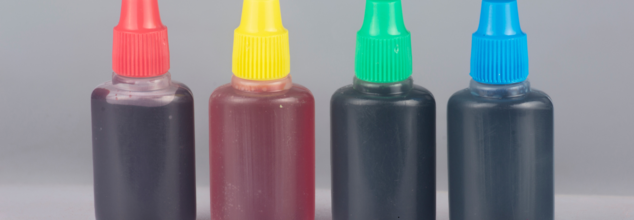- Health Conditions A-Z
- Health & Wellness
- Nutrition
- Fitness
- Health News
- Ayurveda
- Videos
- Medicine A-Z
- Parenting
- Web Stories

Image Credit: Canva
'Blue Zones' Diet: 5 Reasons To Try Foods That Can Help You Live Longer And Healthier
Diet is an undeniable player in the quest for a longer, healthier life. Countless plans flood the market, but not all are supported by science or rooted in the traditions of cultures with proven longevity. While fame has been brought to the Mediterranean diet, the lesser-known Blue Zones diet deserves the spotlight and attention for its transformative approach to nutrition and lifestyle.
This article explores the fundamentals, advantages, and real application of eating for longevity, particularly in the context of the Blue Zones diet-an evidence-based recipe for living healthfully into older age.
What Is the Blue Zones Diet?
The Blue Zones diet is inspired by five areas around the world where people live the longest and healthiest lives:
1. Barbagia region, Sardinia, Italy
2. Ikaria, Greece
3. Nicoya Peninsula, Costa Rica
4. Okinawa, Japan
5. Loma Linda, California, USA
These areas are called "Blue Zones," where people share lifestyles and diets that contribute to their longevity and health. The diet is characterized by whole, minimally processed, plant-based foods, with an active and socially connected lifestyle.
More than just a list of foods, the Blue Zones diet is a way of life characterized by three main guiding principles:
Incorporate physical activity into daily life-whether it's walking, gardening, or taking care of the home.
Eat with others, fostering emotional well-being with family and friends.
Eat intentionally, focusing on nourishment over indulgence.
Key Elements of the Blue Zones Diet
Only Whole Foods
The diet is based on "wholly whole foods," which are single-ingredient items that are raw, cooked, ground, or fermented but not heavily processed. Daily meals usually include:
- Leafy greens, cruciferous vegetables, carrots, and cucumbers.
- Berries, apples, bananas, and citrus fruits.
- Oats, quinoa, wild rice, and barley.
- A critical protein source, including chickpeas, black beans, and lentils.
Role of Fermented Foods
Staple fermented food options include sourdough bread, pickled vegetables, and tofu, providing probiotics for the gut.
Nuts and Fish in Moderation
Nuts are consumed daily, but only a small portion at a time-almonds and walnuts are some of them, while fish, such as salmon or mackerel, are eaten only a few times a week.
Hydration and Beverages
Water is the main beverage, with moderate intake of coffee, tea, and an occasional glass of wine.
Also Read: Longevity Diets: What to Eat to Live Past 100
Foods to Avoid
The diet does not require complete avoidance but moderation is essential in:
- Added Sugars: Found in sodas, cookies, and candies.
- Saturated Fats: Red meats, butter, and palm oil.
- Processed Foods: Usually high in sodium and preservatives.
- Alcohol: More than moderate amounts.
Benefits of the Blue Zones Diet
Fosters Social Well-being
Sharing meals fosters community, which has been a significant factor that ties into happiness and longevity.
Environmental Friendly
This primarily plant-based diet will be earth-friendly, minimizing the carbon footprint when compared to the meat-filled diet.
Nutrient-dense and high in fiber
Full of vitamins, minerals, and antioxidants, it will also ensure digestion and cut down inflammation as well as prevention of chronic diseases.
Sustainability
Contrasted to fad diets, this diet relies on accessible, familiar ingredients, so it is practically adoptable for the long-term.
Scientifically Proven
A 2023 study involving more than 120,000 participants over 30 years revealed that diets rich in fruits, vegetables, whole grains, and legumes significantly lower the risk of death from cancer, heart disease, and respiratory illnesses. These foods, abundant in antioxidants, fiber, and essential nutrients, combat aging at the cellular level while supporting overall well-being.
Practical Tips to Get Started
Start Small
Gradually incorporate more plant-based foods into your menu cycle each week.
Pay Attention to Freshness
Include fresh foods instead of super processed ones.
Prepare Meals Ahead of Time
Advance preparation may ease the transition into eating whole food.
Be Social
Share your meal with others; eating is an art.
Hydrate
Be sure water is your preferred beverage and consume the least number of sugary beverages possible.
Should You Try It?
Absolutely. The Blue Zones diet aligns with the Dietary Guidelines for Americans by encouraging minimally processed, nutrient-dense foods. Though especially beneficial for older adults desiring graceful aging, the principles of this diet can be applied to anyone interested in improved health and vitality.
To athletes and individuals undertaking intense exercise, the healthcare provider would ensure sufficient calorie intake. Balanced and sustainable, this diet will provide the road map to flourishing, not merely surviving.
Eating for longevity means more than just what is served on your plate; it speaks to embracing a lifestyle based in balance, community, and purpose. The diet of the Blue Zones embodies such a holistic view, offering scientifically proven pathways toward extended health and vitality. Incorporating its tenets into everyday life can make everyone take concrete steps toward a healthier, longer life.
Disclaimer: This article is for informational purposes only and not a substitute for professional medical advice. Always consult with a healthcare provider for personalized dietary recommendations.
Healthy Eating Patterns and Risk of Total and Cause-Specific Mortality. JAMA Intern Med. 2023

(Credit-Canva)
Avoid THIS Fruit Juice If You Have Diabetes
Number of people who suffer with diabetes increased from 200 million in 1990 to 830 million in 2022, according to World Health Organization (WHO). Being a chronic disease that plagues thousands of people across the world, diabetes is a condition when your body does not produce enough insulin, or cannot use insulin effectively. There are 2 prominent types of diabetes, out of five, type 1 and 2 diabetes.
When it comes to food, there are certain foods that diabetes patients should avoid. Foods like potato chips, sweet beverages, processed meats, candy, alcohol etc. Another such food, that you should avoid, which seems healthy, is cranberry juice.
Why Should Diabetes Patients Avoid Cranberry Juice?
According to the United States Department of Agriculture, two things you must consider about cranberries are their sugar content (12.1 g per 100 g) and their carbohydrate content (12.2 g per 100 g). Additionally, it provides very little fiber, only about 0.2 grams per serving. This low fiber content means the sugar in cranberry juice can be quickly absorbed into the bloodstream, potentially causing a spike in blood sugar levels.
Despite its sugar content, cranberry juice doesn't necessarily need to be completely off-limits for people with diabetes. The key is to consume it in moderation, limiting servings to no more than half a cup of unsweetened cranberry juice. Alternatively, choosing a cranberry juice that is only sweetened with an artificial sweetener like sucralose can be a better option.
Avoid Cranberries In These Capacities
While a small amount of unsweetened cranberry juice might be acceptable, it's crucial to avoid cranberry juice cocktails, which has high sugar. These beverages typically contain a relatively small percentage of actual cranberry juice (around 27% to 31%). The remaining portion often consists of water, added cane sugar or high fructose corn syrup, artificial colours, and flavors, negating many of the potential benefits of cranberries.
For instance, a serving of a popular cranberry juice cocktail can contain even more sugar than unsweetened 100% cranberry juice, with much of this extra sugar coming from added sources rather than the natural sugars found in the fruit itself.
Benefits of Whole Cranberries for Diabetes Management
Interestingly, while cranberry juice requires careful consumption due to its sugar and fibre profile, whole cranberries themselves may offer benefits for individuals with type 2 diabetes. Research suggests that cranberries, along with blueberries, can improve several markers associated with type 2 diabetes, such as fasting blood glucose and glycated hemoglobin. These positive effects are thought to be due to the presence of polyphenols, particularly anthocyanins, which give these berries their vibrant colours.
Ways You Can Enjoy Cranberry Juice
While you can enjoy cranberry juice by itself, if you do not like the tart flavour of this juice, then here are some ways you can enjoy the benefits of cranberry juice.
Dilute it with water or sparkling water: To lessen the intensity and reduce the sugar concentration, mix unsweetened cranberry juice with plain water or unsweetened sparkling water. You can adjust the ratio to your taste.
Add it to smoothies: Incorporate a small amount of unsweetened cranberry juice into your smoothies for a tangy flavor boost. Combine it with other fruits, vegetables, and protein sources.
Use it in sauces or marinades: The tartness of cranberry juice can add a unique flavour to sauces for meats like chicken or turkey, or in marinades.
Make cranberry ice cubes: Freeze unsweetened cranberry juice in ice cube trays and add them to water or other beverages for a subtle flavor and cooling effect.

This Seemingly Healthy Breakfast Choice Has Been Named The 'Worst Morning Cereal'
What you eat, first thing in the morning or the first meal of the day, plays a very important role for your body. This food is meant to essentially boost you for the waking hours of your body. If you have health issues like high blood sugar, cholesterol or hypertension, then you must be very careful with the foods you eat.
The British Heart Foundation (BHF) points out that not all breakfast items and foods are equally good for you. Starting your day with the right meal is crucial for both your immediate mental and physical performance, and it also sets the stage for your health in the years to come.
When you are picking breakfast options, it is very easy to stick to things that taste good or is your favorite versus what is healthy. We all need a ‘pick-me-up' breakfast or meal when the days are long. However, if you are a person who eats breakfast every day, the options need to be heathier as it could drastically affect your health.
While making healthy choices might seem obvious, even some foods marketed as 'healthy' aren't as good as others. The BHF recently ranked breakfast cereals from the least to the most healthy to help consumers.
Why Eating Granola Is Not Healthy Food?
Surprisingly, the BHF ranked granola, often considered a healthy option, as the least healthy breakfast cereal. An average serving of granola with nuts can contain a significant number of calories and fat even before adding milk. While nuts contain healthy unsaturated fats, granola can also be high in saturated fat and sugar, especially varieties with added chocolate. The BHF suggests enjoying granola as an occasional treat rather than a regular healthy breakfast.
The BHF found that sugar-frosted flakes, while perhaps a popular choice, are high in sugar and low in fiber. They also often contain added salt. While they might taste good, the BHF suggests swapping them for unsweetened options like cornflakes or puffed rice for better heart and overall health. They recommend adding fruit for natural sweetness and an extra serving towards your daily fruit intake.
High-fiber bran flakes landed in the middle of the BHF's ranking. Their high whole grain content is beneficial for digestion and heart health. However, these cereals often contain added sugar and/or salt, which makes them less ideal than the top-ranked choices.
What are Healthy Breakfast Options?
BHF recommends considering these top three options: whole wheat cereals and biscuits, muesli with no added sugar or salt and are packed with whole grains, dried fruit, and nuts for natural sweetness, and the best breakfast- porridge.
Porridge made with low-fat milk or water is the healthiest breakfast you can choose. All porridge oats are whole grains and contain beta-glucan, a soluble fiber that can help lower cholesterol levels as part of a healthy diet. Porridge also provides fiber from the whole grains and naturally contains no added sugar or salt.
Instead of using sugar or salt to flavor your porridge, the BHF suggests adding a banana or other fruits. This not only provides extra sweetness but also counts towards your daily recommended intake of fruits and vegetables.

Credits: Canva
Timeline Of Phasing Out Food Dyes Released By FDA
The US is preparing for a sweeping change in its food supply. Ever since the Trump administration has signed in, there has been a lot of changes in terms of the health sector, and now the focus is on the complete ban over petroleum-based food dyes. The Department of Health and Human Services (HHS) and the Food and Drug Administration (FDA) have announced a detailed plan to phase out petroleum-based synthetic dyes and replace them with natural alternatives. The shift is to be unfolded over the next few years. It will mark a significant milestone in food regulation and public health.
What Is The Timeline of Dye-free Future
The ban will be rolled out in phases. In the coming months, the FDA has planned to revoke the authorization for two synthetic dyes: Citrus Red No. 2 and Orange B. By the end of 2026, six more dyes - FD&C Red No. 40, Yellow No. 5, Yellow No. 6, Blue No. 1, Blue No. 2, and Green No. 3 will be removed from the food supply. FD&C Red No. 3 was originally to set for removal between 2027 and 2028, however, it will be phased out sooner.
In order to make this transitional easier, the FDA will accelerate its review of natural alternatives and promptly authorize four new plant-based dyes: calcium phosphate, Galdieria extract blue, gardenia blue, and butterfly pea flower extract.
Why Does This Matter?
While synthetic dyes are currently FDA-approved when used correctly, there have been new concerns. Some studies have shown that these additives are related to behavioral issues in children, especially with regards to hyperactivity.
FDA Comissioner Dr Marty Makary stated that American children have long been "living in a toxic soup of synthetic chemicals" and stressed the importance for cleaner food labels.
To deepen the understanding, the FDA will partner with the National Institutes of Health (NIH) to study how food dyes and other additives impact children's health and development.
Political Backing and Public Campaign
The Trump administration, under the banner of its health campaign “Make America Healthy Again,” has thrown its weight behind the plan. Robert F. Kennedy Jr., who heads the HHS, has long criticized artificial food chemicals. He stressed the lack of transparency and research on many of these additives, stating, “Four years from now, we are going to have most of these products off the market—or clearly labeled so you know what you are buying.”
Industry Reaction and Consumer Response
So far, food manufacturers have not been legally compelled to remove the dyes, but the government is working closely with them. Kennedy noted that industry leaders have shown a willingness to cooperate, recognizing the growing consumer demand for safer, natural ingredients.
Public health and environmental groups, such as the Environmental Working Group (EWG), have welcomed the move, calling it “long overdue.” Some states, like California and West Virginia, have already imposed restrictions on artificial dyes in school meals and packaged foods.
However, not everyone supports the change. The Consumer Brands Association has raised concerns about removing FDA-approved ingredients, urging that food policy remain rooted in scientific evidence.
© 2024 Bennett, Coleman & Company Limited

